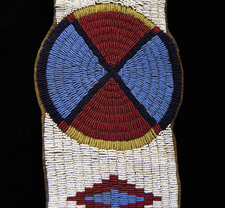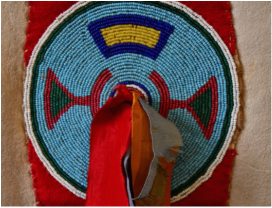19th Century |
Plains Indian Art
|
Plains Indian Art - 2 - more images->
PLAINS INDIANS ARTdescriptions:
|
(Plains Indian Art , see more ->)The Plains Indian artists enriched the everyday lives of their community in a fashion that befitted the grandeur of their environment. When artists such as Albert Bierstadt and Thomas Moran visited the West and depicted the drama of the landscape as outsiders, the Native Americans, who lived within that dramatic landscape manifested its powerful beauty in their every day accoutrements. This show is held in conduction with the landmark exhibition at the Metropolitan Museum of Art, THE PLAINS INDIANS - ARTISTS OF THE EARTH AND SKY.
The Western world first became aware of the grandeur of the Great Plains and the Rocky Mountains through the paintings of Albert Bierstadt and Thomas Moran, among others. Their work depicted a rugged landscape with breath-taking majesty. In some ways, this fueled the idea of the American West and Manifest Destiny which would unleash the forces that would transform this landscape and the people who lived there.
The people who lived there led a nomadic life that was based on seasonal hunts and powered by the horse in pursuit of their staple of life, the American bison. During the middle and later years of the 19th century, the artists who lived among them enjoyed a renaissance of style and design that was enhanced by the proliferation of trade goods including metal tools and glass beads. The ensuing tribal styles which evolved over the 19th century became a reference for artists all over the world and remain an important chapter in the artistic legacy of this land called America. The current exhibition at the Metropolitan Museum, THE PLAINS INDIANS - ARTISTS OF THE EARTH & SKY, celebrates this legacy. John Molloy Gallery is proud to present its own exhibition of this art that celebrates this important chapter in our artistic history. Outstanding among the many fine examples here is the Cheyenne warrior’s shield that is imbued with the visionary art of the shield bearer who ritually found his vision after a period of fasting and isolation. The exhibition features numerous examples of the beadworker’s art which reached a highpoint in color and design in the period immediately after the Indian Wars when the artists had the materials and the necessity to produce their art and maintain their culture. (see more images from 19th Century Plains Indian Art) |


